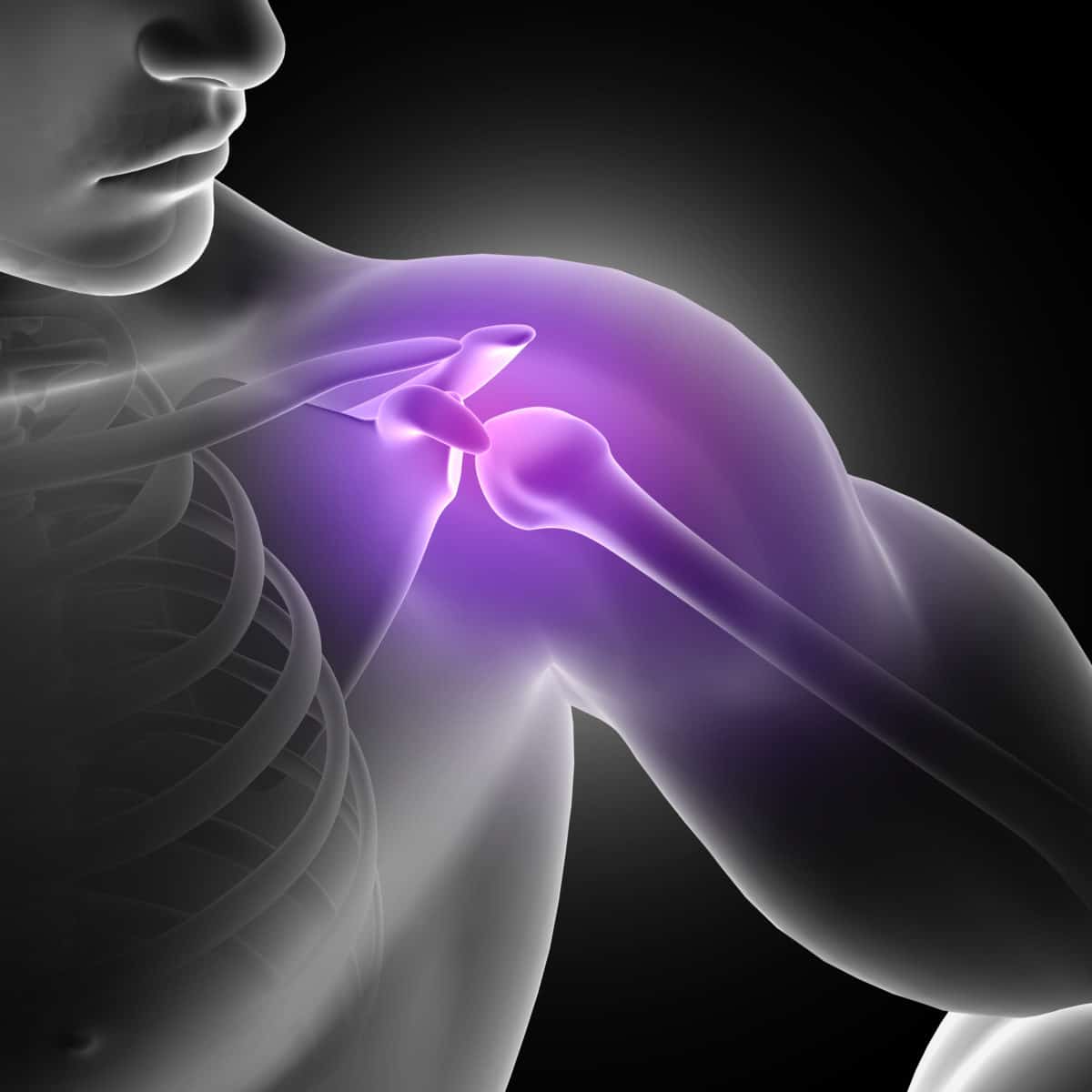Distal Clavicle Osteolysis Treatment in Dallas and Frisco, TX
Weightlifters Shoulder Treatment, Distal Clavicular Osteolysis
Why Do I Have Shoulder Pain When Benching?
Many sports and hobbies come with inherent injury risks, and lifting weights is no exception. One condition that many weight lifters suffer from is called distal clavicle osteolysis, or weightlifters shoulder. Those who lift weights understand that strong, healthy shoulders are key to maintaining good form and protecting themselves from injury. The shoulder’s range of motion allows us to perform many different actions, but it also increases the likelihood of injury. It’s important to seek osteolysis treatment early to avoid worsening the injury.
At SPORT Orthopedics + Physical Therapy, we take great pride in ensuring that our patients have a stress-free treatment experience. Our Dallas orthopedic doctors can identify the source of your pain, obtain a diagnosis, and begin with conservative treatments. If those treatments fail to eliminate your pain, we may opt for surgical intervention. To schedule an appointment with our talented sports medicine team, please call our office at 469-200-2832 today.
What Is Osteolysis?

Osteolysis is a progressive condition in which the bone tissue gets destroyed over time. More specifically, the bones lose crucial minerals, such as calcium. This causes them to lose their density, become softer, and weaken with time. Certain cells in the bones, called osteoclasts, break down those minerals as their activity increases. Several different types of osteolysis exist, all of which can be triggered by different mechanisms.
Three common types of osteolysis include the following.
- Distal clavicular osteolysis (weight lifters shoulder)
- Acro-osteolysis (in the fingers and toes)
- Periprosthetic osteolysis (occurring in those who have undergone joint replacement surgery)
What Is Distal Clavicular Osteolysis?
Distal clavicular osteolysis affects the acromioclavicular joint (AC joint) at the top of the shoulder joint. As we mentioned previously, this condition involves the gradual destruction of the bone tissue in the AC joint. The AC joint is where part of the shoulder blade meets the distal end of the collarbone, or clavicle. The acromioclavicular ligament connects these two bones together, which allows us to raise our arms over our heads.
When distal clavicular osteolysis occurs, the acromioclavicular joint loses calcium, then begins to soften and deteriorate. This form of osteolysis happens much more frequently in those who practice weight lifting and those who frequently perform overhead activities. Construction workers and others who lift heavy objects may develop distal clavicle osteolysis as an overuse injury. Overuse injuries, or repetitive injuries, are those which happen due to the overuse of a joint or from the damage caused by repetitive motions over time.
It’s easy to see how weight training enthusiasts are at risk of developing this painful condition. Luckily, surgical and nonsurgical treatments exist for this condition, which we’ll explore in more detail later.

Weightlifters Shoulder Causes
Currently, the specific cause of distal clavicle osteolysis is not known. However, certain risk factors exist which can increase one’s chances of developing weightlifters’ shoulders.
- Repeated injuries to the distal part of the clavicle, or to the AC joint
- Repeatedly lifting heavy weights or objects
- Having AC joint osteoarthritis or another shoulder joint condition
- Having an infection around the acromioclavicular joint
- Suffering a severe blow to the AC joint

The most common causes of weightlifter’s shoulder are repeated trauma and stress while lifting heavy objects. When doing bench presses, for instance, excessive pressure is placed on the AC joint whenever the elbows drop below or behind the body. Tiny fractures will be created in the bone. Because these fractures will not have time to heal before the next training session, the bone will begin to dissolve. If left untreated, this could potentially lead to degenerative joint disease.
How Do I Know If I Tore a Ligament in My Shoulder?
Another potential source of your pain is a torn ligament in the shoulder near the acromioclavicular joint. Many of the symptoms are similar to distal clavicle osteolysis symptoms, so we recommend seeing a doctor for a differential diagnosis. This means that your doctor will perform a physical examination, order imaging tests, and take other steps necessary to confirm which condition is affecting you. Potential causes of shoulder pain other than AC joint problems include rheumatoid arthritis, a torn rotator cuff, torn AC ligaments, or a subchondral fracture.
Weightlifter’s Shoulder Symptoms

Some of the most common symptoms of weightlifter’s shoulder include the following.
- Aching pain in the front of the shoulder
- Pain and tenderness over the AC joint, at the distal end of the collarbone
- Weakness in the arm and shoulder
- If you are a weightlifter, pain and tenderness will worsen after participating in a weightlifting competition or training night.
- Pain when moving the arm across the body
- Pain when engaging in activities like push-ups, bench presses, or any throwing motions
Keep in mind that this condition tends to progress slowly. Your first symptoms may be stiffness, dull pain, or tenderness. These symptoms will likely become worse with time, as well as worse when you bench press or do other strenuous shoulder exercises. If left untreated for too long, it is possible to lose up to three centimeters of bone tissue in the AC joint.
How Is Distal Clavicle Osteolysis Diagnosed?
The most common way your doctor will diagnose weightlifter’s shoulder is by discussing your signs and symptoms. They will ask you questions about your medical history and when you believe your symptoms began. During a physical examination, your doctor may manipulate the AC joint in order to assess exactly where the injury has occurred.
The diagnosis can be confirmed with X-rays and also with steroid injections. If there is relief from pain after an injection of steroids into the shoulder, this confirms the diagnosis of weightlifter’s shoulder. Corticosteroid injections can also help with any sharp pain that you feel from your condition.
Distal Clavicular Osteolysis Treatment Options
There are potential nonsurgical and surgical treatments for weightlifter’s shoulder. For more minor problems, you can opt to avoid surgical management. Physical therapy and other conservative treatments are preferable to surgery at first, as many patients want to avoid long, painful recoveries. Below, we outline both the surgical and nonsurgical treatment options for osteolysis of the distal clavicle.
Nonsurgical Treatments for Weightlifters Shoulder

Nonsurgical treatments will likely comprise wholly of changes to your lifestyle. Young patients can often alleviate symptoms from conservative treatment. If you are a weightlifter or any other type of athlete, your doctor will likely work with a physical therapist to determine a training plan for you that will not aggravate your symptoms.
A physical therapist will be able to give you specific advice on activity modification for your specific injury. For example, narrowing your hand spacing on barbells can take the stress off the distal clavicle. Ending your bench presses at least two inches above the chest can also help.
Ice can be applied to the affected area after a workout session to help manage pain and stimulate healing. Anti-inflammatory medications like ibuprofen can also be used to help manage pain. If the pain persists, your doctor may recommend corticosteroid injections. A steroid injection can alleviate pain for several weeks, if not a few months.
Surgery for Weightlifters Shoulder
For those who do not improve with nonsurgical treatment, or for those who are unwilling or unable to change their training routine, there is a procedure called a distal clavicle excision, in which the affected end of the clavicle will be removed. This can be done arthroscopically, with tiny cameras and surgical instruments, or through a larger open incision. This procedure is called an arthroscopic distal clavicle excision.
It is also possible, once the end of the bone has been cut, to transfer a nearby ligament over the cut end. This helps protect the joint and makes weightlifting significantly more comfortable for many athletes.
The following are the most popular surgical techniques for treating distal clavicular osteolysis.
- Arthroscopic distal clavicle resection
- Open distal clavicle excision
- Open distal clavicle resection
- Arthroscopic distal clavicle excision
Does Osteolysis Heal on Its Own?
In most cases, yes. Orthopedic surgery is generally reserved as a last resort for distal clavicle issues, as the recovery period can be long and painful. If you make the necessary adjustments to your lifestyle and training techniques, the condition should improve over the next two years. However, failing to properly care for your shoulder can make matters worse. Both a direct and indirect approach is necessary when it comes to avoiding an arthroscopic resection or excision surgery.
Weightlifter’s Shoulder Recovery

Recovery from nonsurgical treatment is different for everyone. It is generally okay to return to normal activities once you are pain-free. A physical therapist can help you gradually resume normal activity without aggravating your symptoms. Activity modification is crucial for as speedy a recovery as possible.
After undergoing surgery, training can be tentatively resumed in as little as three days, and most return to normal preoperative activities within one week. However, this can vary depending on the patient, as well as which surgical technique was used. Speak with your orthopedic surgeon about how to prevent further pain or injury after surgery.
Arthroscopic Treatment for Distal Clavicle Osteolysis
An arthroscopic distal clavicle resection is just one of the treatments we offer for distal clavicle osteolysis. At SPORT Orthopedics + Physical Therapy, we can help provide relief for your pain, teach you how to care for your body, and get you back on your feet in no time. In summary, distal clavicle osteolysis is a fairly mild condition, but it can worsen without prompt treatment. To schedule an appointment with a sports med professional, please call our office at 469-200-2832 today.


